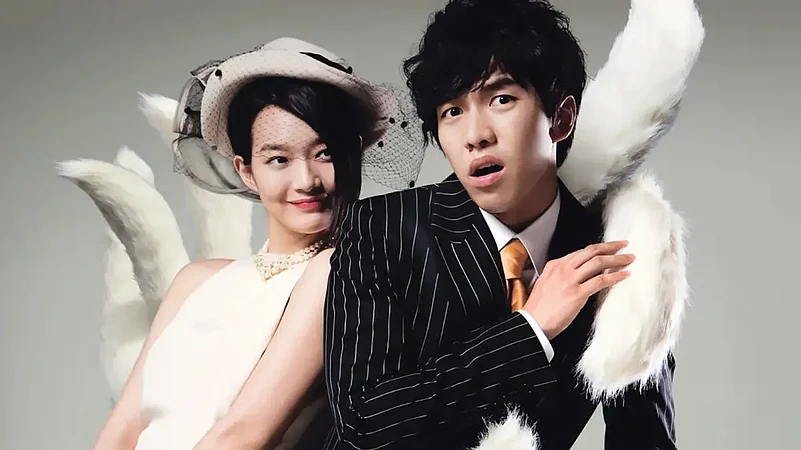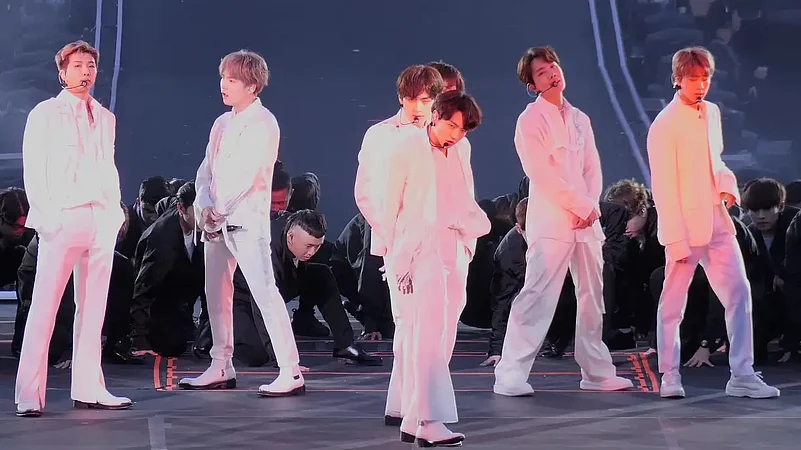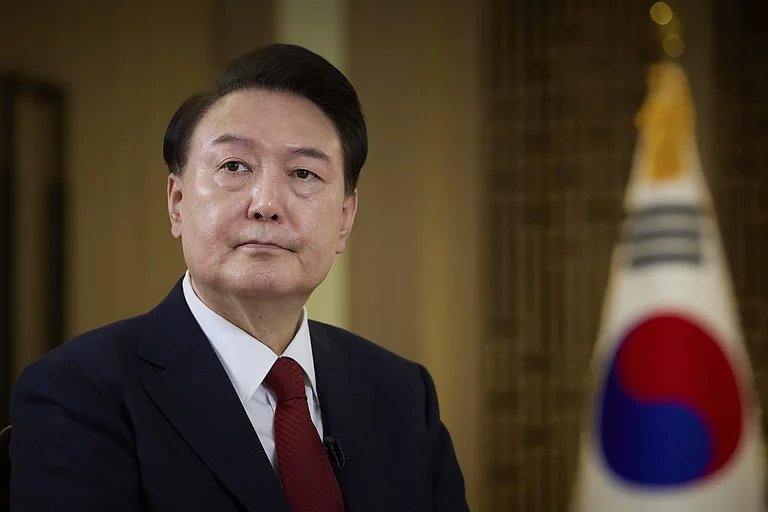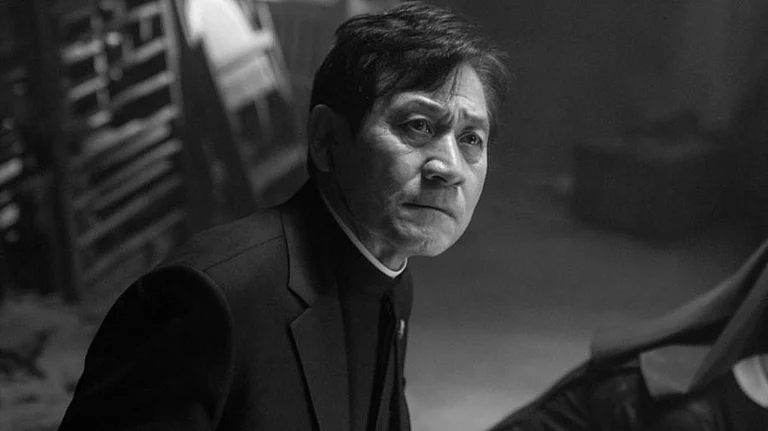When 11-year-old Naikhowa Wansuham, studying in a residential school in Arunachal Pradeh’s capital Itanagar, got a CD of My Girl Friend is Gumiho, a romantic Korean Drama, it made her glued to TV of the community hall of her hostel. The movie was about a boy falling in love with a nine-tailed fox (Gumiho) in the human form who would go to any extent to protect her.
Naikhowa liked the series so much that soon she and her friends would only watch Korean dramas and movies every Sunday by renting CDs and DVDs. Flower of Evil, Our Beloved Summer, Itaewon Class, Bridal Mask, Miracle in Cell No. 7 – she would not miss out on anything that is Korean, be it movies, dramas, pop music, hip-hops or a bowl of Bimimbap (a Korean rice bowl).
She said, “I liked the clothes of Shin-Min-a (lead female actor of My Girlfriend Is Gumiho). These are light, pastel coloured, lacy, very girlish, and, yes, very sober. Her hat, her hair style, the way she talks to her boyfriend is so cute. It’s like escaping the harsh reality and stepping into a world of magical things.”
Naikhowa, now 21, identifies herself as an Army (fan) of Bangtan Sonyeondan, popularly known as BTS, the South Korean Boy band that was formed in 2010 and debuted in 2013. Apart from BTS, she swears by the songs of Black Pink, NCT, Stray kids, EXO, and Astro – all K-pop boy groups, thanks to the toe-tapping techno beats and colourful aesthetics.

In adjoining Manipur, 19-year-old Anupama Asheibam is learning the Korean language in King Sejong Institute of Imphal. Named after Sejong the Great, the fourth ruler of the Joseon Dynasty of Korea, under whose rule the phonetic system for writing the Korean language was developed. The institute is run by the Korean Cultural Centre India.
Anupama’s first encounter with the Korean culture was a K-drama named Full House in 2013.
“They are feel-good, romantic and nice,” says Anupama. She said she took admission in the language institute to understand the movies without subtitles in English and learn the lyrics of the songs of the K-pop bands. She added, “My friend and I have a plan to work and settle in Korea. I want to talk in Korean, understand those movies without subtitles and learn all the songs.”
Anupama likes to wear “cute” dresses with Korean style shoes, belts, contact lens, and jackets among other accessories. She wants to have the Korean glass skin – the latest skin care trend that seeks to attain a blemish free skin like a piece of glass.
From hair styles to make up, from clothes to shoes, from hats to belts – the craze is to looking like a Korean.
In 2012, when the rest of India’s first mass encounter with the K-pop culture began with Gangam Style by South Korean pop star Psy, Northeast India’s encounter with Korean culture begun more than a decade earlier. Over 2,400 kms from New Delhi, in Manipur, Revolutionary People’s Front, a militant outfit, put a ban on transmission, screening and viewing of Hindi movies in the year 2000.
This came at a time when the Bollywood movies were favourite for cine-goers in a region where Hindi was still like a foreign language. Hollywood was also setting foot slowly.
“There were five-six movie halls in the city of Imphal at that time which screened Bollywood and Hollywood movies. I remember watching the last Hindi movie Kuch Kuch Hota Hai in 1998,” said Romi Metei, a national award-winning filmmaker from Manipur.
The separatist rebel group claimed that Hindi movies from Bombay were “undermining the cultural values of the state” and portraying “feudal values typical of India's Hindi heartland”. It threatened to bomb movie halls if found to be screening Hindi movies. It confiscated 6,000-8,000 video cassettes and compact discs of Hindi movies and music and burnt them as a protest against “Indianisation” of Manipur.
The ban created a vacuum into the entertainment space of the state. This vacuum started to be filled with pirated CDs of Korean movies and dramas in markets of Imphal, popularly known as Moreh markets that deal with imported items from South-Asian countries through Myanmar.
Dr Otojit Kshetrimayum, a Manipuri scholar and faculty of VV Giri National Labour Institute, told Outlook, “The ban was co-incidental with India’s Look East policy which opened its market with Southeast Asian nations. As a result, pirated Korean movie CDs, cassettes, through Moreh town of Myanmar started flooding Manipur.”
Theses CDs were copied over and over and were given on rent at Rs 10 to Rs 20.
“We love those movies and dramas because we can relate to them. They look like us. The food they eat is very similar. The clothes they wear are easy to imitate because it suits our culture and moreover, we can see these movies sitting with our parents. There is no vulgarity in these movies,” says K Sapna Begum, 23, a journalism intern who belongs to Manipur’s Pangal community.
Begum says usage of Korean words during conversation with friends has become common now. Many youths in Manipur can pull up a whole conversation in WhatsApp in Korean language without any formal learning, she claims.
“If you don’t know certain words like sincha (really), aneyong (Hello), kamsahamnida (thank you) and sarang-haeyo (I love you) daebak (goodness) chingu (friends) etc, your friends will be annoyed,” she laughed while speaking.
According to Romi Metei, youths in Manipur have also picked up Korean Sign Language (KSL) as well.
The ban on Hindi movies proved to be a boon for the Korean wave, known as Hallyu, a term that emerged in mid-1990s in Beijing of China. In 2008, Arirang TV, a 24/7 South Korean satellite channel started getting aired on cable networks of Manipur. Filled with family dramas, romantic movies, travelogues, and culinary shows, the cultural elements of Korea made the youths of Manipur transfixed to TV.
Dr. Anup Sekhar Chakraborty, faculty of Department of Political Science and Political Studies, Netaji Institute for Asian Studies, Kolkata, said psychology behind the craze for Hallyu is in its eastern connection.
He said, “It’s the eastern connect and the Mongoloid wave in Northeast India. There seems to be an idea that they have a close inclination towards Korean kind of influence rather than Hindi or Bollywood movies in terms of materiality.”
Same goes with Mizoram, a state that also shares its boundary with Myanmar. Apart from copying styles, languages, music and food, the Generation Z and millennial in Mizoram are opting for more and more skin-whitening treatments to get the perfect Korean glass skin. It includes whitening injections, cosmetic surgeries, topical applications, and tablets..
Dr Manguri Ralte, a well-known dermatologist from Aizwal, told Outlook, “There is a trend among the Mizo youth to have a better skin complexion, inspired by Korean movies and music videos. Many opt for medication in oral form, creams, or masks etc, and some even opt for whitening infections at doctors’ clinic and sometimes at salons performed by unqualified persons as well. This needs to be looked at by concerned authorities.”
She said the Mizos don’t have to be crazy for skin whitening treatments.
The craze for K-Pop culture increased after youths from Mizoram started winning various K-pop competitions across Asia. In 2017, Immortal Army, a seven-member K-Pop band won the second- best dance performance at the K-Pop World Festival 2017 in Changwon, South Korea, an annual music and dance competition organised by South Korea’s Ministry of Foreign Affairs. The following year, 18-year-old Juchy won the first prize in the vocal category at the grand finale of The Changwon K-POP India 2018.
Now the K-Pop community also responds to political and social issues.
In one such example, the K-Pop fans in Mizoram stormed the internet with hashtag campaigns against Assam Government after the Assam-Mizoram border clash in July 2021.
The state government of Nagaland also welcomed Hallyu officially by organising the Indo-Korea music festival in Kohima in 2008. Nagaland, a tiny state with about 2.3 million people witnessed thousands of youths thronging in the festival as the Korean musicians strode on the stage. Soon, the Phulbari market in the heart of the capital was replete with Korean fashion trends like skinny jeans, hooded jackets, slacks, socks, and hats.
Salons removed photos of Bollywood actors and started putting up headshots of popular Korean celebrity actors and singers like Song Hye Kyo, Bae Suzy, Shin Min-a and Park Min Young.
In 2018, Korean pop band K-MONT was invited by the Nagaland government to perform in its annual state festival Hornbill. In February 2021, South Korean Ambassador Shin Bong-kil visited Nagaland. Apart from his meeting with Nagaland Chief Minister Neiphiu Rio and Governor RN Ravi, he also dined with Hallyu Wave Nagaland, a K-Pop club. The Nagaland CM commented that South Korea happens to be the most popular country in Nagaland, and Korean movies, drama, and taekwondo enjoy high popularity.
“There is a saying here, once you Jim-in, you cannot Jim-out,” said 24 year-old-Yaring Loham of Army of BTS. Lohan here refers to Kim Seok Jin, the popular singer and songwriter of BTS.
These days, market corners in Northeastern capitals are no longer seen selling pirated CDs and DVDs. The Korean clothes markets are also not as rush as it used to be. The market has now shifted online. OTT platforms like Netflix have been airing huge numbers of Korean Dramas.
The likes of Squid Games, Mr. Sunshine, Hellobound, and All of Us Dead have become immensely popular in every nook and corner of the country. Music websites, Spotify, Nykaa, and online merchandise sites have been filled with Korean beauty products, making sure Hallyu is going to be there for some time.


























